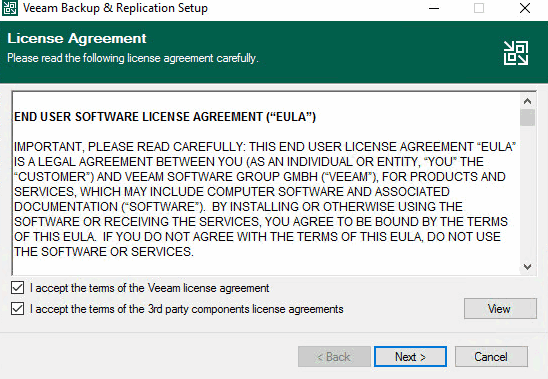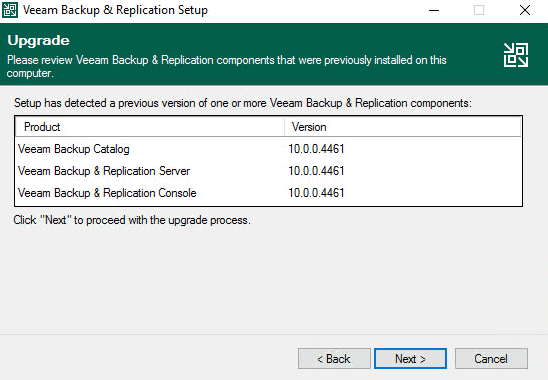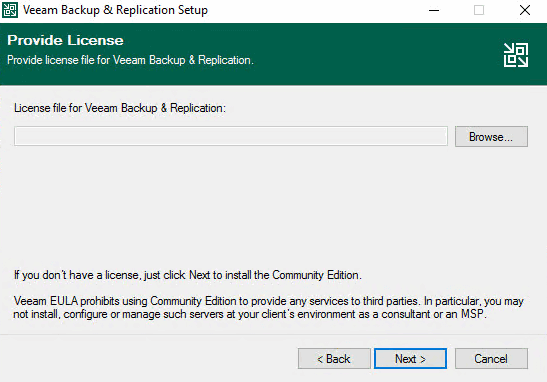Veeam Backup and Replication v11a is available
Veeam has launched a new update for Veeam Backup & Replication 11a with the build 11.0.1.1261. In this post, I will try to highlight the main features added to Veeam Backup & Replication 11a version and the improvements as the bug fix.
Note: This version is still not GA(Generally Available) it means you can download it from the Veeam product list yet, and you need to download it from the KB Veeam page HERE.
What is new in this Veeam Backup & Replication 11a
Newly supported systems:
- Microsoft Windows Server 2022 and Microsoft Windows 10 21H1
- Microsoft Windows 11 readiness
- Microsoft Azure Stack HCI version 21H2
- RHEL/CentOS 8.4, Ubuntu 21.04, Debian 11, SLES 15 SP3, OpenSUSE Leap 15.3, Fedora 34
- VMware Cloud Director 10.3 support
- VMware Cloud On AWS 15 support
- VMware vSphere 7.0 U3 readiness
Important note for Windows 2022: Avoid upgrading your existing Server 2019 based ReFS backup repositories to Server 2022 and/or mounting ReFS volumes from Server 2019 to new Server 2022 installs until Microsoft addresses the known regression in the ReFS format upgrade code.
- Nutanix AHV Instant Recovery
Nuanix AHV v3 with instant recovery features is included in the new Veeam backup and replication update. Now Customers can instantly recover image-level backups created by any Veeam product to a Nutanix AHV VM. This is supported in any workload running cloud, virtual, or physical.
Note:- This functionality requires Nutanix AHV 6.0 or later.
- In this new update, you can have more than one VCD using Veeam Self-Service Backup Portal, which means VMware Cloud Director, 10.3, and Veeam Self-Service Backup Portal are supported for multiple Cloud Director servers.
- Native protection of additional services: Expand native backup and recovery to Amazon Elastic File System (Amazon EFS) systems and Microsoft Azure SQL Databases.
- Lowest cost archive storage: Achieve long-term retention goals for cloud-native backups within budgets. New support for Amazon S3 Glacier and Glacier Deep Archive, Microsoft Azure Archive Storage, and Google Cloud Archive storage cuts data archival costs by as much as 50X.
- Increased security and control: Safeguard encrypted backup data from ransomware and other cyber threats. With new updated Veeam increased security with streamlined control over access authorizations by Integrations with AWS Key Management Service (KMS) and Azure Key Vault, as well as new RBAC functionality,
- Google Cloud Platform (GCP) support: GCP protection is now available directly into the Veeam Backup & Replication console. Further, with V11a, customers can now restore image-level backups created by any Veeam product directly to a GCE instance for cloud disaster recovery of any workload. With these additions, Veeam now supports centrally managed cloud-native backups and Direct Restore functionality.
- Centralized management for IBM AIX and Oracle Solaris protection
With this new update, Veeam Agents for IBM AIX and Oracle, Solaris jobs can now be centrally monitored and managed. This is achieved by integration with Veeam Backup & Replication protection groups of the “Computers with pre-installed agents” type. In addition, you can now perform file-level recovery from such backups in Veeam Backup Enterprise Manager.
- Red Hat Virtualization (RHV) support
With support for a fourth hypervisor in a supported public beta, Veeam Backup & Replication v11a offers reliable integrated backup for Red Hat Virtualization (RHV) 4.4.7 or later so customers can create efficient backups of RHV VMs utilizing native change block tracking and be prepared for any disaster.
- Kasten by Veeam K10 integration readiness
With the new update of Veeam Backup & Replication v11a, K10 and Veeam customers will be able to leverage existing investments in the backup infrastructure. The upcoming Kasten K10 v4.5 will be able to directly backup the Kubernetes clusters that leverage VMware persistent volumes to a Veeam Backup & Replication repository where its lifecycle can be managed and additional Veeam features and capabilities leveraged.
Kasten is a new product acquired by Veeam this year, this product is a Full integrated Backup Solution for Kubernetes.
- Veeam Continuous Data Protect (CDP): With 11a update Veeam improved performance and reduced CPU usage during the initial synchronization, adding better monitoring and reporting for replication conveyor issues. Also with this update, Veeam added compatibility with a number of VMware Virtual Volumes (vVOLs) implementations, removed existing limitations on maximum I/O journal size for VMware vVOLs and VMware vSAN target storage.
- Improved health check performance: storage-level corruption guard functionality will now also use the advanced data fetcher technology, which significantly improve the performance on enterprise-grade backup storage hardware.
- Elliptic curve cryptography: in addition to data encryption, elliptic curve-based keys are now supported for registering Linux servers with Veeam Backup & Replication using the SSH public key authentication method.
- Restore directly from Capacity Tier: when a restore process is initiated from backups stored in the Capacity Tier Veeam will no longer read matching data blocks from the Performance Tier and instead use solely the data from object storage.
- Object storage compatibility: to help object storage devices with limited scalability, you can again enable your backup jobs to use the 8MB block size to reduce the number of objects created. To make this option visible, create the UIShowLegacyBlockSize (DWORD, 1) registry value under the ‘HKLM\SOFTWARE\Veeam\Veeam Backup and Replication key on the backup server. Keep in mind that this option significantly increases the incremental backup size and requires an active full backup to be activated.
- External repositories: the backup server will now detect the presence of new restore points as they appear, instead of having to wait for daily and/or manual rescan to be performed, thus addressing various inconsistencies in the user interface.
- Microsoft Azure authentication library: we have switched from ADAL to the recommended and more secure Microsoft Authentication Library. Microsoft plans to discontinue ADAL support entirely in mid-2022.
- Microsoft SCVMM: we added the infrastructure caching service to improve the performance of SCVMM-integrated jobs and user interface operations in large Hyper-V environments registered with Veeam via the SCVMM server.
Upgrading to Veeam Backup & Replication 11a
To perform an upgrade of Veeam Backup & Replication to version 11 or 11a, you must be running version 9.5 Update 4b (build 9.5.4.2866) or later on the supported operating system (refer to the System Requirements section of this document). To upgrade from previous versions, contact Veeam Customer Support.
This update can only be upgradable from 9.5 Update 4b (build 9.5.4.2866) or later. If you have an older version, you must upgrade to 9.5 4b at least, and then upgrade to this version. Also, If Veeam Backup for Microsoft Office 365 is installed on the same server, it must be upgraded to at least version 5d (build 5.0.3.1033) before installing Veeam Backup & Replication 11a.
To upgrade Veeam Backup & Replication to version 11 or 11a, perform the following steps:
- Make sure you have checked all the prerequisites listed in the Upgrade Checklist.
- Download the latest version of the Veeam Backup & Replication ISO from the Veeam Backup & Replication Download page.
- Make sure the latest run for all existing jobs has been completed successfully. Rerun the failed jobs.
- Ensure there are no running jobs, restore sessions, Instant Recovery sessions, and SureBackup jobs. A sper Veeam recommendation that you do not stop running jobs and let them complete successfully. Disable any periodic and backup copy jobs temporarily to prevent them from starting during the upgrade.
- If necessary, perform the configuration backup, as described in Running Configuration Backups Manually.
Not:-e if you have at least one password created in the Password Manager on the backup server, Veeam Backup & Replication requires that you encrypt the configuration backup. For more information, see Creating Encrypted Configuration Backups.
- Mount the product ISO and use autorun, or run the Setup.exe file.

- Click the Upgrade option to launch the upgrade wizard.

- Read and accept the license agreement and select, then click Next

- The system detects a previously installed version of Veeam components. Click Next.

- Provide a license file , if you have not provided a license this will be a community edition

Review components and select an installation folder

- Select Install missing software

- Re-Check and click Continue

- Select the LOCAL SYSTEM account as a service account then click Next.

- Select option Use existing instance of SQL Server (HOSTNAME\INSTANCE) in order to upgrade existing VeeamBackupReporting database. Click Next.

- Click Yes to perform the database upgrade.

- Click Install to perform the upgrade of Veeam Backup & Replication server
Note:- You may select update remote components automatically or you can upgrade them later manually

- The upgrade is being installed and you can monitor the progress

- Once the upgrades has been completed successfully, click Finish to exit the installation wizard

- Also, When the console opens, the Components Update wizard is displayed, and proceed for upgrade of the components and click finish

The upgrade of the Veeam infrastructure is now complete and new features are available to be tested.
Modernize your data protection and eliminate downtime with Veeam® Backup & Replication™, the simple, flexible, reliable and powerful solution for protecting your cloud, virtual and physical workloads. Try a FREE 30-DAY TRIAL!















